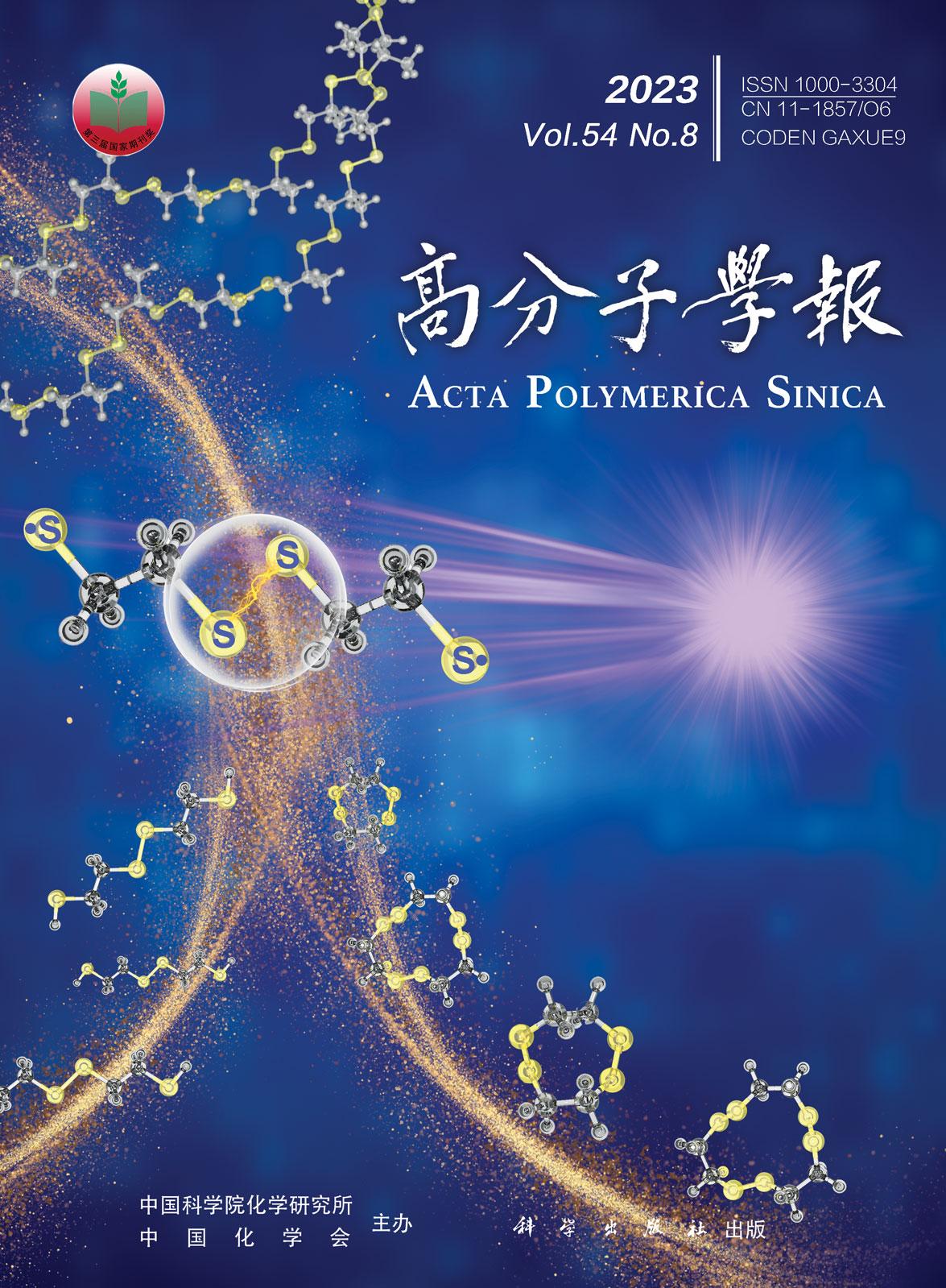Just Accepted
ASAP Articles
Current Issue
List of Issues
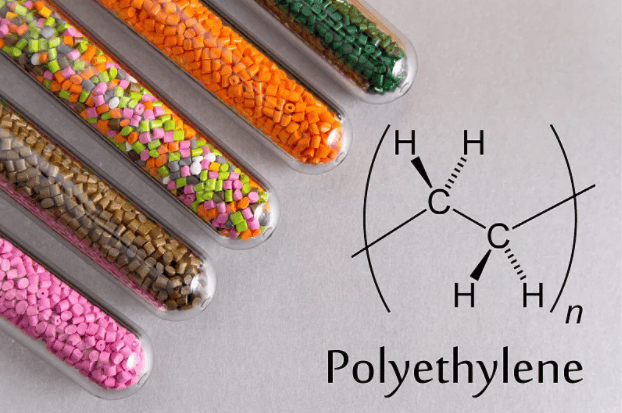
Research article22 Jul 2021
Nonlinear Viscoelasticity Raised at Low Temperatures by Intermolecular Cooperation of Bulk Amorphous PolymersWe performed dynamic Monte Carlo simulations of stress relaxation in parallel-aligned and uniaxially stretched bulk amorphous polymers at low temperatures. We observed an extra-slowing down in the early stage of stress relaxation, which causes nonlinear viscoelasticity as deviated from Debye relaxation and Arrhenius-fluid behaviors observed previously at high temperatures. Meanwhile, fluctuation analysis of stress relaxation revealed a substantial increase in the stretch fractions of polymers at the transient periods of high-temperature Debye relaxation. Structural analysis of free volume further revealed the scenario that, at low temperatures, the modulus of polymer entropy elasticity decreases with temperature and eventually loses its competition to the imposed modulus (Deborah number becomes larger than one), and hence upon stress relaxation under constant strains, monomers are firstly accumulated nearby two stretching ends of polymers, resulting in tentative global jamming like physical cross-linking there, and thus retarding the coming transient state of stress relaxation. We concluded that intermolecular cooperation raises physical crosslinking for nonlinear viscoelasticity of polymer stress relaxation as well as the rubbery states unique to bulk amorphous polymers. The new microscopic mechanism of the fluid-rubbery transition of polymers may bring insights into the intermolecular cooperation mechanism of glass transition of small molecules, if the fluid-rubbery transition is regarded as an extrapolation of glass transition from low to high molecular weights.
Research article18 Jun 2021
Biodegradable Polypeptide-based Vesicles with Intrinsic Blue Fluorescence for Antibacterial VisualizationFluorescence imaging has been an indispensable tool to provide dynamic information about the localization and quantity of organisms. Meanwhile, due to the intrinsic hollow structure and modularized biofunctionalities, polymer vesicles have been widely applied in biomedical field. However, most polymer vesicles are embedded with organic fluorophores for fluorescence imaging, which have certain drawbacks such as leakage and possible cytotoxicity. Here, we present a biodegradable polypeptide-based vesicle with intrinsic blue fluorescence without introducing any fluorophore for real-time visualization of antibacterial process. Through modular design to integrate multiple functional fragments, poly(ε-caprolactone)-block-poly(tryptophan)-block-poly(lysine-stat-phenylalanine) [PCL25-b-PTrp2-b-P(Lys13-stat-Phe4)] was synthesized, where PCL chains form the hydrophobic membrane, P(Lys-stat-Phe) and PTrp provide intrinsic fluorescence and broad-spectrum antibacterial activity. It is noteworthy that the fluorescence emission was shifted from invisible ultraviolet range of amino acids to visible range (emission maximum at 436 nm), which makes it possible to visualize the antibacterial process. In addition, through utilizing the intrinsic fluorescence of vesicles, confocal fluorescent imaging of vesicles with bacteria validated the specific adhesion of vesicle towards bacteria, and the bacterial death through membrane disruption. Overall, we provided a novel approach to developing biodegradable fluorescent polypeptide-based vesicles for real-time visualization of antibacterial process.
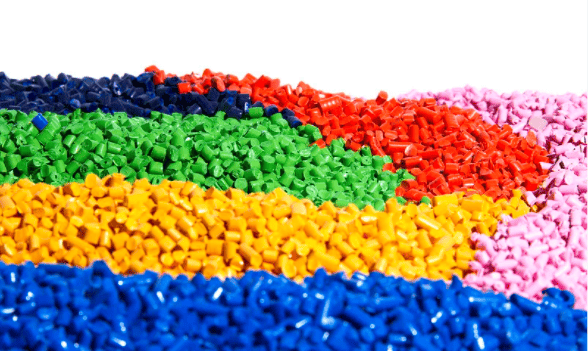
Research article15 Jun 2021
Mixing of Racemic Poly(L-lactide)/Poly(D-lactide) Blend with Miscible Poly(D,L-lactide): Toward All Stereocomplex-type Polylactide with Strikingly Enhanced SC CrystallizabilityStereocomplex-type polylactide (SC-PLA) consisting of alternatively arranged poly(L-lactide) (PLLA) and poly(D-lactide) (PDLA) chains has gained a good reputation as a sustainable engineering plastic with outstanding heat resistance and durability, however its practical applications have been considerably hindered by the weak SC crystallizability. Current methods used to enhance the SC crystallizability are generally achieved at the expense of the precious bio-renewability and/or bio-degradability of PLAs. Herein, we demonstrate a feasible method to address these challenges by incorporating small amounts of poly(D,L-lactide) (PDLLA) into linear high-molecular-weight PLLA/PDLA blends. The results show that the incorporation of the atactic PDLLA leads to a significant enhancement in the SC crystallizability because its good miscibility with the isotactic PLAs makes it possible to greatly improve the chain mixing between PLLA and PDLA as an effective compatibilizer. Meanwhile, the melt stability (i.e., the stability of PLLA/PDLA chain assemblies upon melting) could also be improved substantially. Very intriguingly, SC crystallites are predominantly formed with increasing content and molecular weight of PDLLA. More notably, exclusive SC crystallization can be obtained in the racemic blends with 20 wt% PDLLA having weight-average molecular weight of above 1×105 g/mol, where the chain mixing level and intermolecular interactions between the PLA enantiomers could be strikingly enhanced. Overall, our work could not only open a promising horizon for the development of all SC-PLA-based engineering plastic with exceptional SC crystallizability but also give a fundamental insight into the crucial role of PDLLA in improving the SC crystallizability of PLLA/PDLA blends.
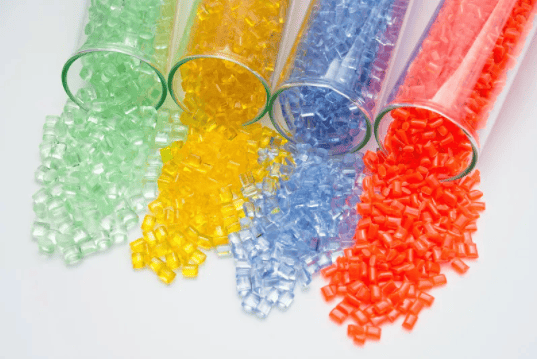
Research article25 Jul 2021
Responsive Polymeric Nanoparticles for Biofilm-infection ControlWith the emergence of multidrug resistance (MDR) in many pathogens, bacterial infections are becoming a growing threat to public health. The frightening scenario is due largely to the formation of biofilms, in which the bacteria are extremely recalcitrant to the conventional antibiotic regimens. To address the emergence of MDR and biofilm-associated infections, numerous polymer-based materials have been designed and prepared recently. The subject of this perspective is the recent development of polymer-based materials that have been applied to combat multidrug-resistant pathogens, to prevent the formation of biofilms, or enhance the eradication efficacy to mature biofilms via killing biofilm-bacteria or dispersing biofilms. The advantages and shortcomings of these polymer-based materials are discussed, as well as the challenges we are facing in the clinical translation of these systems.
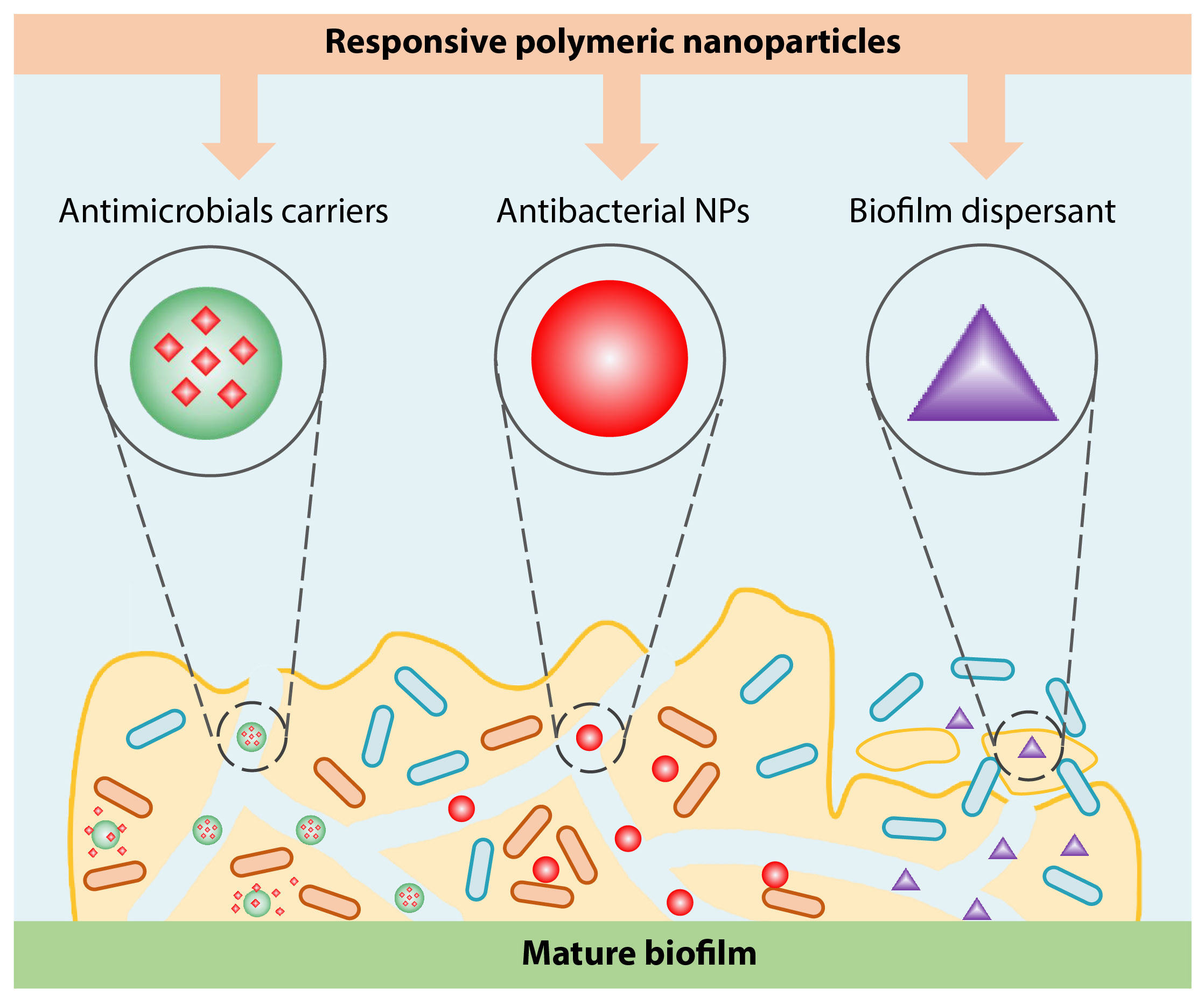
Research article25 Jun 2021
Monoclonal Antibody-conjugated Polyphosphoester-hyd-DOX Prodrug Nanoparticles for Targeted Chemotherapy of Liver Cancer CellsIn order to overcome the limitation of traditional active nano-therapeutic drugs on tumor targeting efficiency which cannot reach the receptor/target in sufficient amount in the body, in this work, we developed a monoclonal antibody (mAb) and a polymer-hyd-doxorubicin prodrug conjugate, which enables the self-assembled nanoparticles to have precise targeting, tumor tissue aggregation and pH-sensitive drug release. We first prepared an amphiphilic polymer prodrug, abbreviated as H2N-PEEP-b-PBYP-hyd-DOX, via a combination of ring-opening polymerization (ROP) and “click” chemistry, in which PEEP and PBYP represent two kinds of phosphoester segmemts, -hyd- is hydrazone bond. After self-assembly into prodrug nanoparticles (PDNPs) with a diameter of about 93 nm, CD147 mAb was conjugated onto the PDNPs by EDC/NHS chemistry to form mAb-PDNPs. For the PDNPs and mAb-PDNPs, we also investigated their stability, in vitro drug release behavior and cellular uptake. The results showed that the pH-responsive PDNPs can remain relatively stable under the condition of PB 7.4 buffer solution. However, under acidic conditions or in the presence of phosphodiesterase I (PDE I), both the amount and rate of DOX release increased at the same incubation period. Cytotoxicity assay showed that mAb-PDNPs exhibited higher cytotoxicity (IC50: 1.12 mg·L−1) against HepG2 cells than PDNPs (IC50: 2.62 mg·L−1) without monoclonal antibody. The nanoparticles with antibodies mAb-PDNPs have relatively better stability and can directly achieve the targeting drug delivery through CD147 mAb.
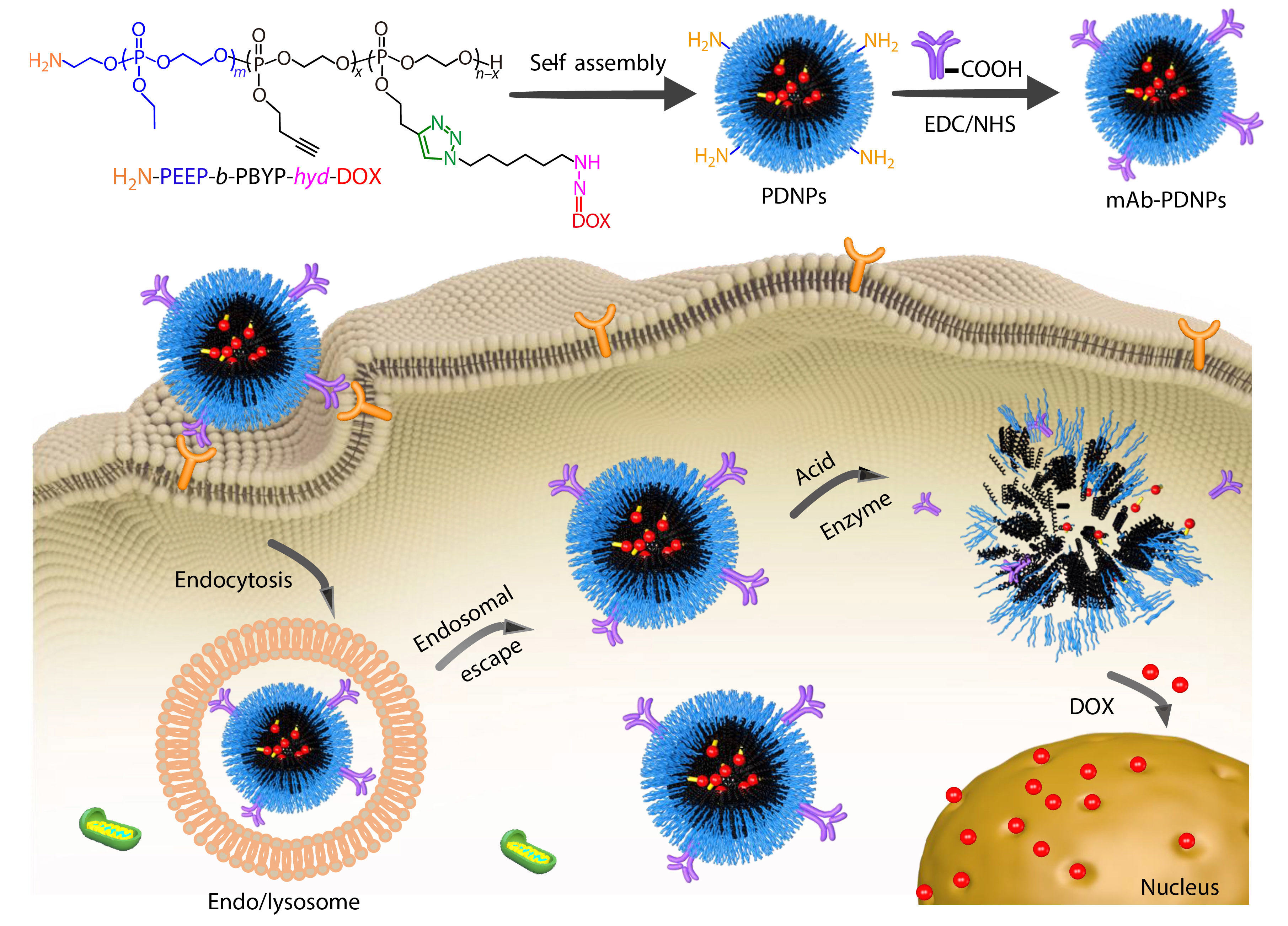
Research article08 Jul 2021
Polymerizable AEE-active Dye with Optical Activity for Fluorescent Nanoparticles Based on Phenothiazine: Synthesis, Self-assembly and Biological ImagingIn consideration of various advantages such as less harm, higher sensitivity, and deeper imaging depth, etc., AIE materials with long-wave emission are attracting extensive attention in the fields of vascular visualization, organelle imaging, cells tracker, forensic detection, bioprobe and chemosensor, etc. In this work, a novel fluorescent (R)-PVHMA monomer with chirality and aggregation-induced emission enhancement (AEE) characteristics was acquired through enzymatic transesterification reaction basing on phenothiazine, and its \begin{document}${\left[\alpha \right]}_{D}^{25^\circ {\rm{C}}}$\end{document} value was about −6.39° with a 3.08 eV bandgap calculated by the quantum calculations. Afterwards, a series of PEG-PVH1 and PEG-PVH2 copolymers with chirality feature were achieved through RAFT polymerization of the obtained (R)-PVHMA and PEGMA with various feed ratios. When the feed molar ratio of (R)-PVHMA increased from 21.5% to 29.6%, its actual molar fractions in the PEG-PVH1 and PEG-PVH2 copolymers accordingly increased from 18.1% to 25.7%. The molecular weight of PEG-PVH1 was about 2.2×104 with a narrow PDI, and their kinetics estimation showed a first-order quasilinear procedure. In aqueous solution, the amphiphilic copolymers PEG-PVH could self-assemble into about 100 nm nano-particles. In a 90% water solution of H2O and THF mixture, the fluorescence intensity had the maximum value, and the emission wavelength presented at 580 and 630 nm. The investigation of cytotoxicity and cells uptake showed that PEG-PVH FONs performed outstanding biocompatibility and excellent cells absorption effects, which have great potential in bioimaging application.
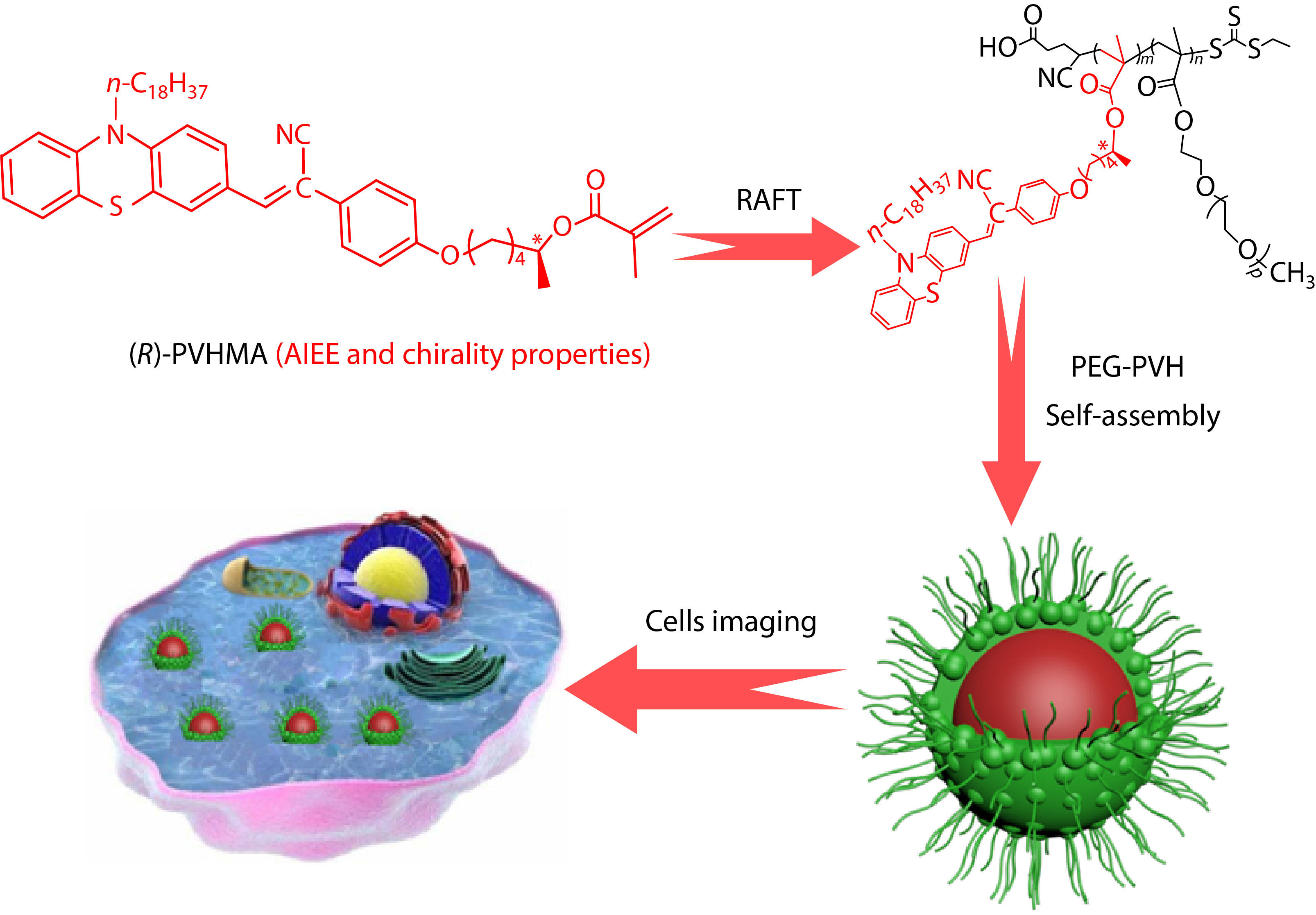
Research article03 Aug 2021
A Unified Thermodynamic Model of Flow-induced Crystallization of PolymerWe propose a unified thermodynamic model of flow-induced crystallization of polymer (uFIC), which incorporates not only the conformational entropy reduction but also the contributions of flow-induced chain orientation, the interaction of ordered segments, and the free energy of crystal nucleus and crystal morphology. Specifically, it clarifies the determining parameters of the critical crystal nucleus size, and is able to account for the acceleration of nucleation, the emergence of precursor, different crystal morphologies and structures induced by flow. Based on the nucleation barrier under flow, we analyze at which condition precursor may occur and how flow affects the competition among different crystal forms such as orthorhombic and hexagonal phases of polyethylene. According to the uFIC model, the different crystal morphologies and structures in the flow-temperature space have been clarified, which give a good agreement with experiments of FIC.
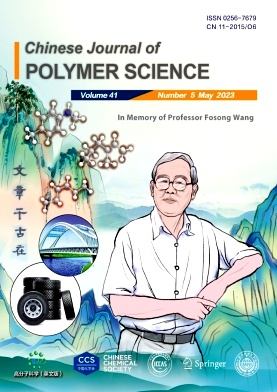
More
Special Issues
Cover Article
Recommend
Virtual Issues
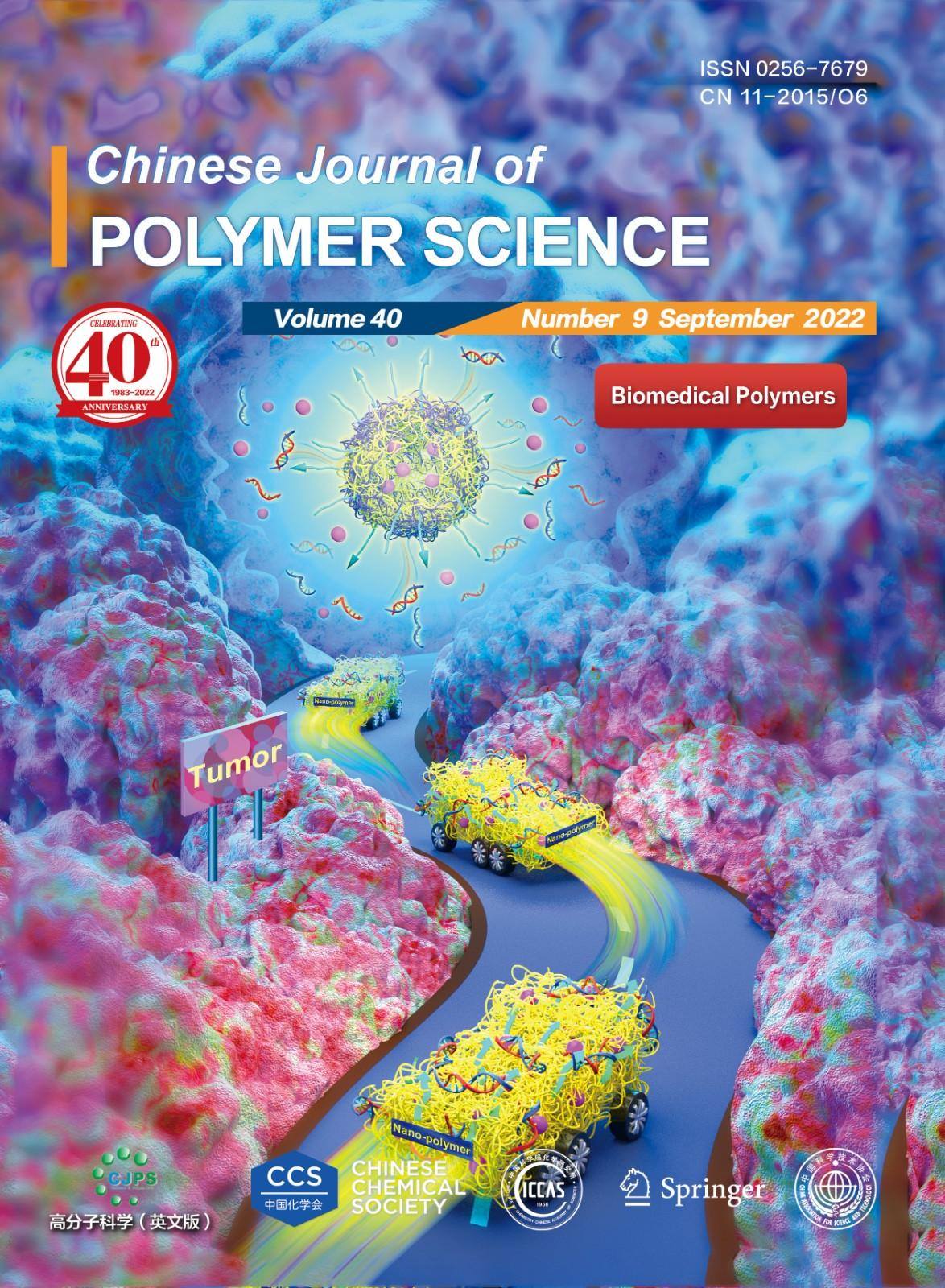
Biomedical Polymers-2022
26 Aug 2023
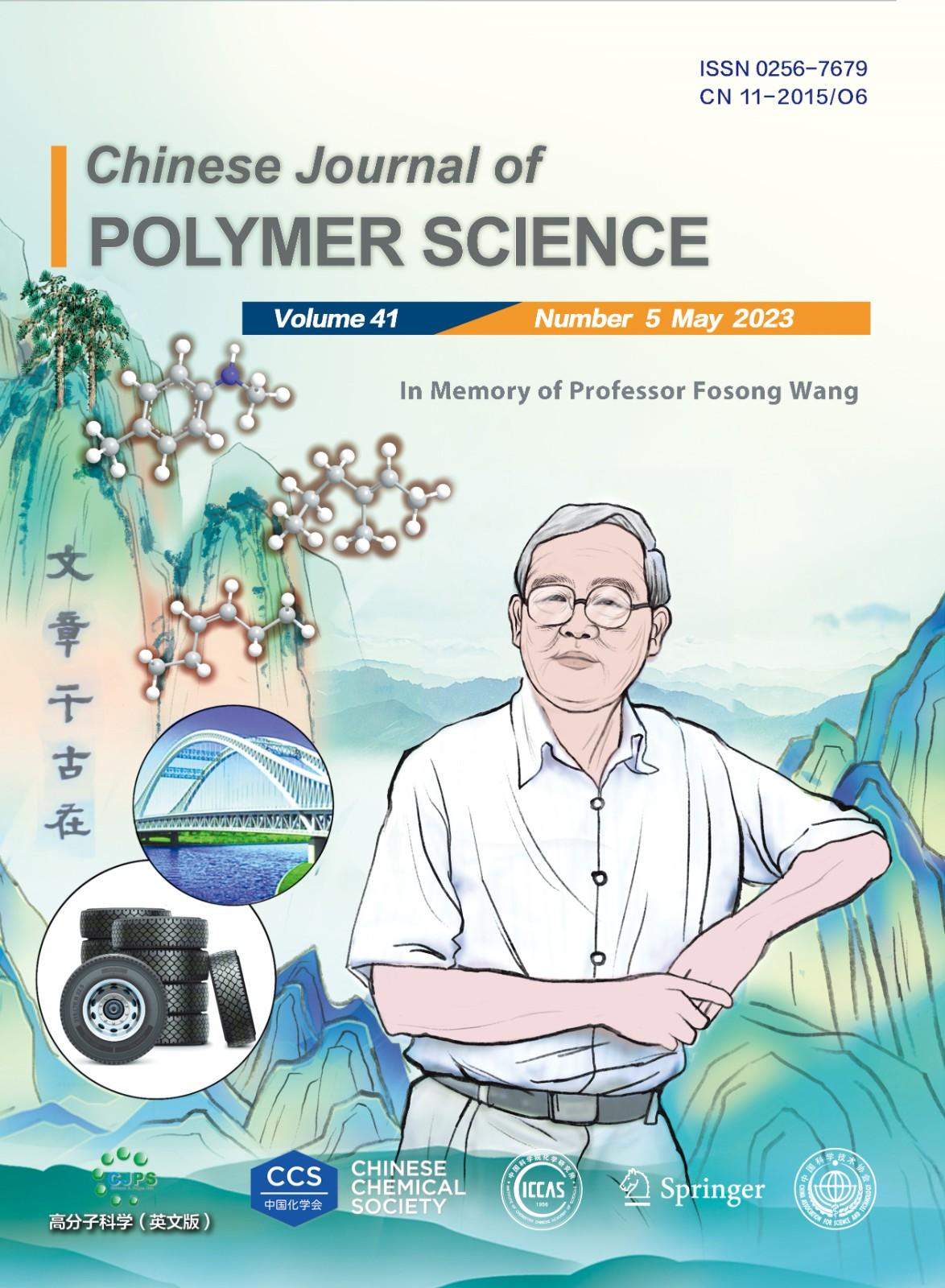
In Memory of Professor Fosong Wang
26 Aug 2023
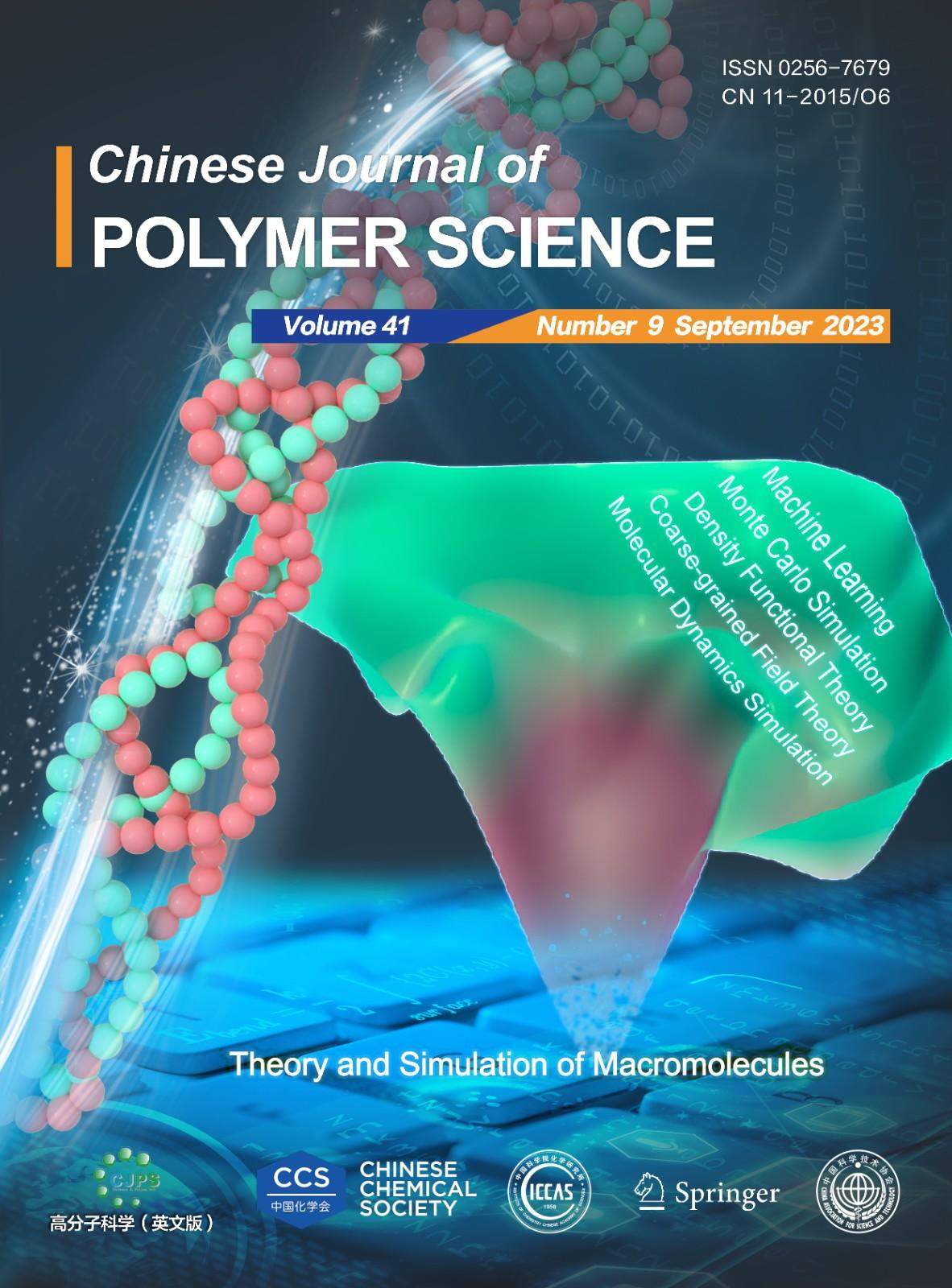
Theory and Simulation of Macromolecules
26 Aug 2023
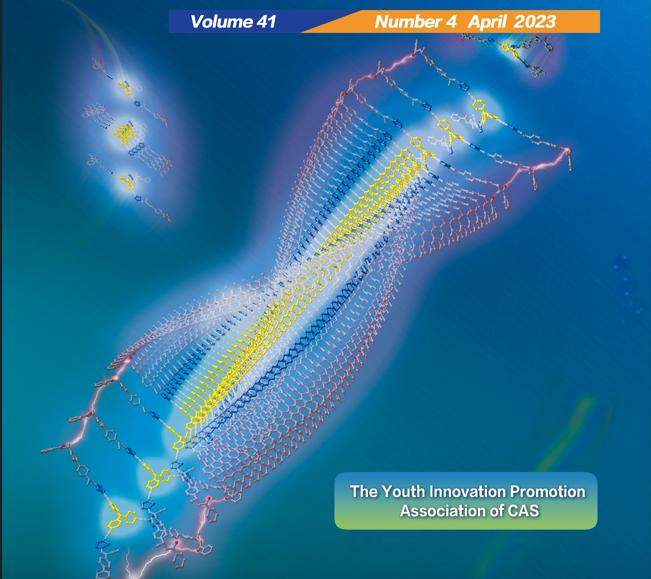
The Youth Innovation Promotion Association of the Chinese Academy of Sciences
26 Aug 2023
More
Most Download
Most Citation
Research article17 Aug 2021
The Anion Binding Affinity Determines the Strength of Anion Specificities of Thermosensitive PolymersIn this work, we demonstrate that the strength of anion specificities of thermosensitive polymers is determined by the affinity of direct anion binding to the polymers. We have prepared a series of thermosensitive statistical copolymers with distinct thermoresponsive behaviors. The anions can specifically interact with the different types of thermosensitive polymers in very different strengths. A similar strength of specific anion effects on thermoresponsive behaviors can be observed at very different salt concentrations for the different types of thermosensitive polymers. A stronger anion binding to the thermosensitive polymers gives rise to a more obvious anion specificity and vice versa. The work presented here opens up opportunities for the application of ion binding affinity to modulate the strength of ion specificities of thermosensitive polymers.
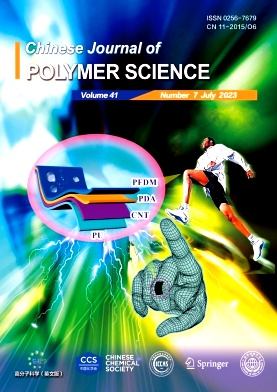
Research article05 Jul 2021
Tuning the Johari-Goldstein β-Relaxation and Its Separation from α-Relaxation of Poly(n-alkyl methacrylate)s by Small Molecule-bridged Hydrogen BondsIntroducing small molecule-bridged hydrogen bonds (HBs) between polymer chains has been reported to effectively reduce the inter-chain cooperativity despite of strengthening the intermolecular interaction. Here, a systematic investigation on tuning the Johari-Goldstein β (βJG) relaxation by adding various low-molecular-weight phenols in poly(n-alkyl methacrylate)s is carried out to further clarify the anomalous dynamics. Given these small molecules capable of coupling the motion with pendent groups of host polymers due to forming at least two HBs per molecule, poly(n-alkyl methacrylate) mixtures exhibit rich dynamic changes in the βJG-properties and α, βJG separations. An increased loading of phenols with a small size and strong inter-HB strength (Δυi) clearly benefits for significant retardation and suppression of the βJG-relaxation, narrows the α, βJG separation and converges the βJG-peak with the α-peak, which demonstrates the alleviation of inter-chain topological constraints. However, small molecules with a relatively big size and weak Δυi are found to amplify the magnitude of the α, βJG separation of poly(butyl methacrylate), even though experimental results of changes in α-dispersion and dynamic fragility confirm a reduction of the coupling factor n in all of these hybrids. The counterintuitive phenomenon suggests that the crossover time tc in the Coupling Model is no longer a universal quantity if the inter-chain interaction of polymers is strengthened by HBs. These compelling findings shed vital insights into the HB-induced anomalous dynamics, and provide essential guidance for tailoring the βJG behavior and designing glassy polymeric materials.
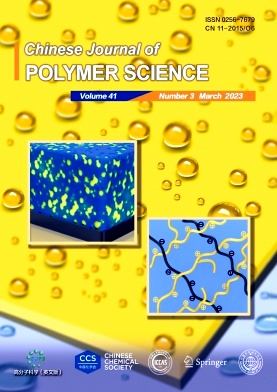
Research article03 Aug 2021
A Unified Thermodynamic Model of Flow-induced Crystallization of PolymerWe propose a unified thermodynamic model of flow-induced crystallization of polymer (uFIC), which incorporates not only the conformational entropy reduction but also the contributions of flow-induced chain orientation, the interaction of ordered segments, and the free energy of crystal nucleus and crystal morphology. Specifically, it clarifies the determining parameters of the critical crystal nucleus size, and is able to account for the acceleration of nucleation, the emergence of precursor, different crystal morphologies and structures induced by flow. Based on the nucleation barrier under flow, we analyze at which condition precursor may occur and how flow affects the competition among different crystal forms such as orthorhombic and hexagonal phases of polyethylene. According to the uFIC model, the different crystal morphologies and structures in the flow-temperature space have been clarified, which give a good agreement with experiments of FIC.

Research article23 Jul 2021
Force-Extension Curve of an Entangled Polymer Chain: A Superspace ApproachThe statistical mechanics of an ideal polymer chain entangled with static topological constraints is studied using a superspace approach, in which the probability distribution of the polymer is obtained as solutions of the Fokker-Planck equation in a superspace with an inner structure characterized by the n-generator free group. The theory predicts that the force-extension curve of the polymer under the topological constraints has the generic form F=kl+Z/l, where l is an effective extension. Aside from the elastic term that is linear in l, the force-extension curve contains a universal term of the form Z/l. The magnitude of this topological term is determined by the topological charge number Z, which characterizes the topological nature of the static constraints. The theoretical results are further verified by a scaling analysis based on a blob model of the chain conformations.
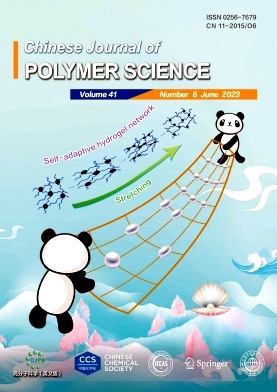
More
Links

